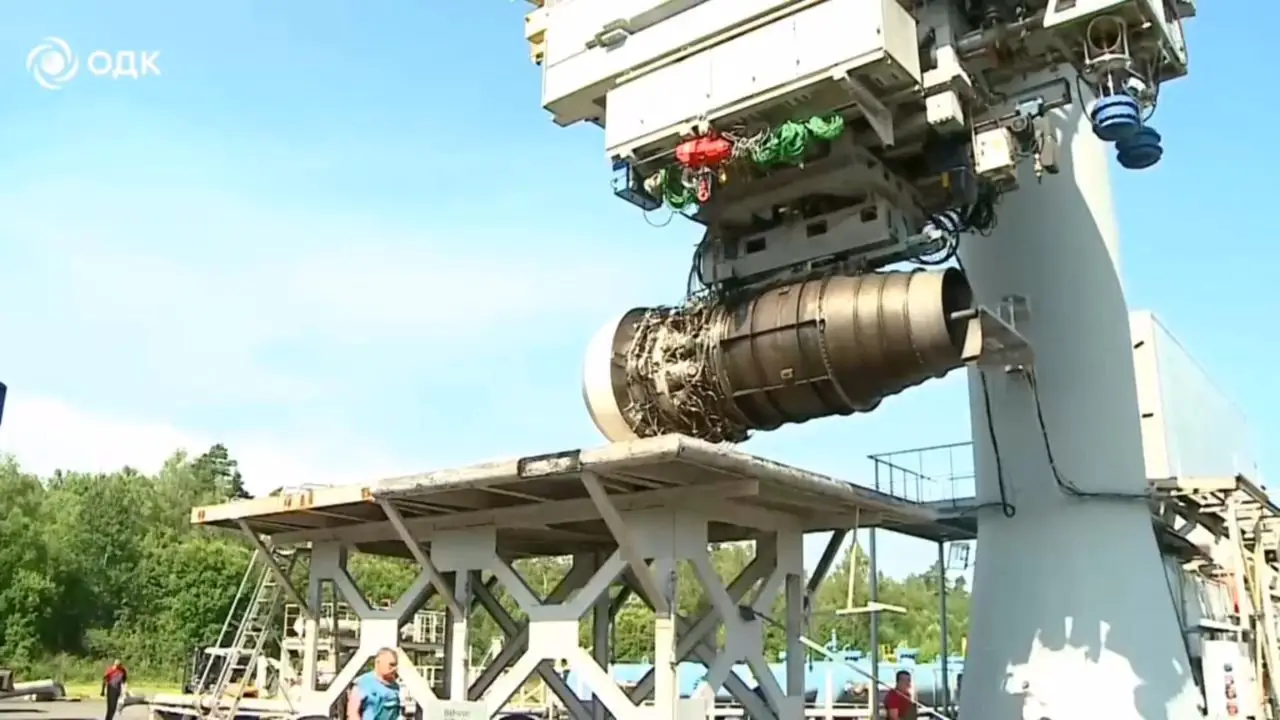ODK Enterprises, a prominent entity in the Russian engine-building sector and a subsidiary of Rostec’s United Engine Corporation (UEC), has declared that it is prepared to initiate serial production of the PD-8 aircraft engine. The announcement is a significant milestone in Russia’s pursuit of technological independence in civil aviation, particularly in response to the increasing demand for high-performance aircraft engines that are domestically manufactured and used to power its new generation of regional jets and amphibious aircraft.
Final Certification and Serial Manufacturing: Advanced Stages
“We are currently in the final phase of certification testing for the new PD-8 engines,” stated Artem Badernikov, the Deputy Chief Designer of the PD-8 engine. The testing procedures are extensive, encompassing over 100 programs, including crosswind testing, avian strike tests, hailstorm impact tests, water ingestion tests, and fan blade-out tests. “These are intricate and critical tests,” Badernikov added.
The rigorous certification process expedites implementation while upholding stringent safety and reliability standards by utilizing both physical testing and advanced digital modeling, or “digital twin” technology. This digital approach has facilitated the refining of the certification process by reducing the necessity for certain physical trials that are more costly and time-consuming. It is anticipated that the PD-8 engine will obtain its official type certification by September 2025.
Serial Production Timeline and Output
ODK Enterprises expects the commencement of industrial-scale production in 2025 with the release of the first four serially produced PD-8 engine units. These initial engines will be mainly employed for experimental installation on the Be-200 aircraft and integration with the Superjet 100. Despite the modest figure for the first year, this deployment is indicative of a meticulously measured strategy to establish a strong technical and logistical foundation for the engine’s production.
Rostec has verified its readiness to manufacture up to 30 PD-8 engines in 2026. This substantial increase suggests a heightened level of supplier readiness and manufacturing capabilities. This is also in accordance with the broader demand that is expected from domestic airlines, aircraft manufacturers, and institutional users, including the Ministry of Emergency Situations, which operates the Be-200.
It is crucial to acknowledge that these production figures are lower than the figures that were initially established by the government in its Comprehensive Aviation Industry Development Program. The program specified the production of 26 engines in 2025 and 52 in 2026. However, it is probable that the Ministry of Industry and Trade will revise those figures in a forthcoming proposal to reflect the changing technical timelines and program budgets. An updated version of the state program is anticipated to be submitted for governmental review in the second part of July 2025, as confirmed by Minister Anton Alikhanov.
Modernizing Russian Aviation: Engine Applications
The flagship regional aircraft is the Superjet 100 (SJ-100)
The PD-8 turbofan is the designated successor to the Russian-French SaM146 engine in the import-substituted variant of the Superjet 100 (SJ-100). The PD-8’s integration is a critical component of Russia’s import substitution program, which guarantees that aircraft are not dependent on foreign technology.
The maiden flight of the first prototype SJ-100, which was propelled by PD-8 engines, was conducted in March 2025. All test objectives were successfully met, and the engine operation was stable. Throughout the year, there are plans for additional prototypes and certification flights. The PD-8 engines have already been subjected to over 3,500 flight hours of flight testing, which has yielded reliable data for operational readiness and certification.
Be-200 Amphibious Aircraft Expansion
The PD-8 is intended to serve as the powerplant for the modernized Be-200 amphibious aircraft, in addition to regional jets. It will replace the Ukrainian D-436 engines that were employed in previous iterations. This transition not only enhances the Be-200’s operational capabilities and export prospects but also reinforces supply chain sovereignty, particularly in international firefighting and rescue markets.
The PD-8 necessitates a significant redesign of the Be-200’s engine nacelles, gasoline, and electronic systems, with a focus on amphibious environments’ durability. The Be-200 installation will be certified after the successful conclusion and certification of the SJ-100 with PD-8 engines, which is anticipated to occur in late 2025. Strategic Consequences of Technological Innovations
The PD-8 engine is a product of the most recent advancements in Russian aero-engineering, which include the extensive use of additive manufacturing for critical components and the lessons learned from the PD-14 program (for the MC-21 airliner). Improved fuel efficiency, simplified maintenance, and compliance with current environmental standards are all achieved through the engine’s modern, two-spool design, which is equipped with entirely domestic electronic controls.
This development occurs as Russia intensifies its efforts to achieve technological self-sufficiency in response to international sanctions and the necessity for independent, domestic aviation solutions.
Future Prospects: The Groundwork for Future Development
The PD-8’s successful serial launch has laid the groundwork for the rapid modernization of both regional air travel and specialized roles such as aerial firefighting. Russian aviation is on the brink of a new era, which will be defined by a revitalized industrial base, operational autonomy, and advanced domestic technology, as UEC expands production capacity and achieves certification milestones.
Industry watchers will closely track the output goals, certification updates, and the future use of the PD-8 in more aircraft and for export.
Official Website of Youtube Channel – Altitude Addicts
